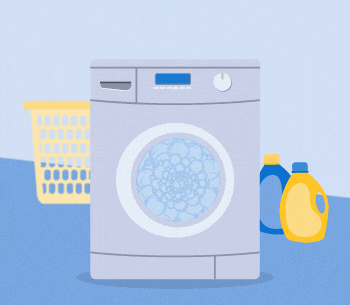The Engineer's Guide to Appliance Grease
 Appliance manufacturers are challenged to deliver innovation and value to everyday household products. Some areas of innovation focus on customer experience, low water/energy usage, smaller size, personalization, and shorter cycle times.
Appliance manufacturers are challenged to deliver innovation and value to everyday household products. Some areas of innovation focus on customer experience, low water/energy usage, smaller size, personalization, and shorter cycle times.
Value is often delivered in the design, function, quality, durability and reliability of a product. Appliance lubrication can enable innovation without sacrificing the value customers expect.
Vibration, moisture, corrosion, extreme temperatures and demanding load-carrying requirements are all common causes of component failure. Component failure creates serious problems for OEMs including poor customer experience, increased warranty costs, and safety concerns.
The Advantages of Lubricating Appliance Components:
- Extend operational life of components
- Seal & protect from environmental elements
- Reduce friction & wear
- Improve durability & reliability of mechanisms
- Increase load-carrying capabilities
- Control motion
A small amount of lubricant can create a barrier that protects components from the environment, wear, and ultimately, product failure. Lubricants can also enable design innovations such as durable, light weight, gear box designs or drawers with improved usability and feel. Nye offers solutions for low and high-temperature applications for lifetime lubrication.
Bearings

Nye recommends impregnating oils for sintered bearings and grease for rolling element bearings. Oils provide the lubricating film that reduces friction and wear. Greases create a seal to protect bearings from contaminants and moisture.
| Product | Chemistry | Temp Range (°C) |
NLGI Grade | Oil Separation (24 hrs @ 100°C) |
Kinematic Viscosity 100°C 40°C |
|---|---|---|---|---|---|
| SYNTHETIC OIL 623B | Ester | -40 to 150 | N/A | N/A | 8.7 cSt 54 cSt |
| UNIFLOR 8512 | PFPE/PTFE | -50 to 225 | 2 | 6.8% | 15.8 cSt 65 cSt |
Gears

Modern appliance designs require more power transfer with minimal noise and heat generation. Lubricants minimize the friction that creates heat while dampening noise and vibration.
| Product | Chemistry | Temp Range (°C) |
NLGI Grade | Oil Separation (24 hrs @ 100°C) |
Kinematic Viscosity 100°C 40°C |
|---|---|---|---|---|---|
| RHEOLUBE 362HB | PAO/Lithium Soap | -40 to 125 | 2 | 2.2% | 5.7cSt 32.6 cSt |
| RHEOLUBE 380-G1 | PAO-Ester/Lithium Soap | -50 to 130 | 1 | 18.6% | 6.5 cSt 36.9 cSt |
| UNIFLOR 8512R | PFPE/PFPE | -50 to 225 | 2 | 6.3% | 16.5 cSt 67 cSt |
Electrical Components
Grease for sliding electric switch contacts must have excellent film strength, low and high temperature capability and stay-in-place capability. For the smooth operation of switches, a damping grease is recommended to reduce noise and minimize wear. For connectors, synthetic hydrocarbons provide excellent film strength, broad temperature serviceability, and protection against corrosion.
| Product | Chemistry | Temp Range (°C) |
NLGI Grade | Oil Separation (24 hrs @ 100°C) |
Kinematic Viscosity 100°C 40°C |
|---|---|---|---|---|---|
| NYOGEL 760G | PAO/Silica | -40 to 135 | 2 | 1.5% | 39.4 cSt 400cSt |
| NYOGEL 774VLF | PAO/Silica | -54 to 125 | 2 | 2.3% | 111 cSt 903 cSt |
| RHEOLUBE 362HT | PAO/Lithium Soap | -54 to 125 | 2 | 2.9% | 6 cSt 33 cSt |
Slides & Rails

Slides and rails do not operate at high enough speeds or loads for a lubricant to form a fluid film that will separate surfaces. Therefore, it is important to select a grease that stays in place and does not rely on film formation to prevent wear.
| Product | Chemistry | Temp Range (°C) |
NLGI Grade | Oil Separation (24 hrs @ 100°C) |
Kinematic Viscosity 100°C 40°C |
|---|---|---|---|---|---|
| FLUOROCARBON GEL 880 | Dimethyl Silicone/PTFE | -40 to 200 | 2 | 0% | 7349 cSt 18407 cSt |
| RHEOLUBE 363F | PAO/Lithium Soap | -50 to 125 | 2 | 8.43% | 8.6 cSt 51.7 cSt |
| UNIFLOR 8172 | PFPE/PTFE | -45 to 225 | 2 | 3.8% | 18 cSt 167 cSt |



